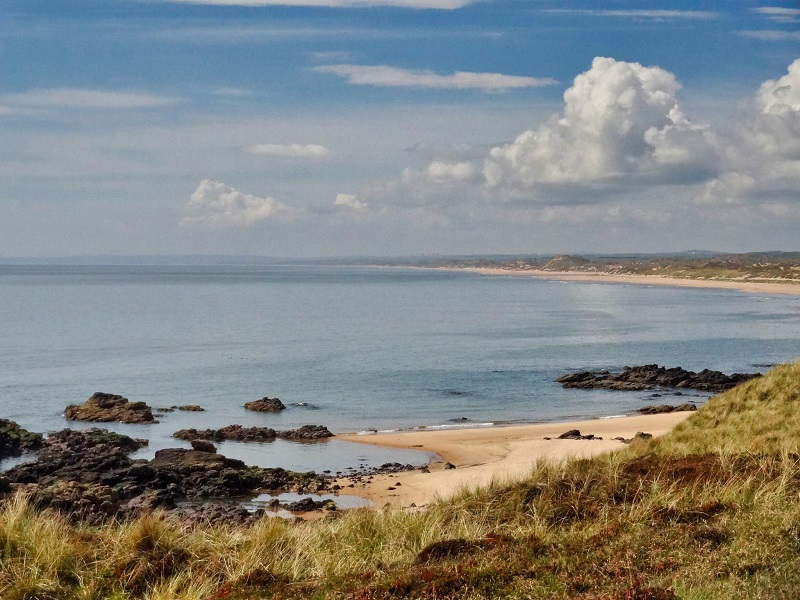Shifting Sands
It’s not often that a place in Scotland is compared to the Sahara Desert. However, it’s been said that the sand dunes of Forvie National Nature Reserve (NNR) share many similarities with the world’s largest desert. Located north of Aberdeen, on Scotland’s east coast, the reserve at Forvie lies adjacent to the Ythan Estuary. It is best known for its dramatic dune system, which is highly mobile and produces an environment that is ever-changing and diverse in habitat.

Whipped up by strong winds, the dune systems change appearance from day to day, and their unpredictable behaviour is what led to the abandonment of the original village of Forvie, after it was slowly consumed by the sand. This dune mobility is surprisingly similar to that of the Sahara desert, along with Forvie’s lack of permanent vegetation in some regions. Few plant species are adaptable enough to survive on dunes that change so often and the large expanses of sand make for fantastic beach scenery all year round. While life may be sparse on the dunes, it is decidedly not so in the surrounding areas. The reserve is a magnet for migrating birds, as well as breeding birds, land mammals and marine life.
Sanctuary for Seals
The mouth of the Ythan Estuary – which forms part of the reserve at Forvie – is an important habitat for one of Scotland’s charismatic marine mammals, the seal. Both British species can be found here, with Grey Seals and Common Seals being present in large numbers. At certain points during the year, their numbers can reach anywhere between 1,000 and 3,000 individuals, and this makes Forvie NNR one of the best spots in the country to see these animals. The reserve is designated as a seal “Haul-out Site”, meaning it is an area where the seals come ashore to rest, moult or breed.

It’s important not to disturb the seals when they are on land. Luckily, the reserve has a designated viewing area on the beach, overlooking the haul out area. This provides excellent views while also making sure the seals remain comfortable. Listen out for the seals communicating amongst each other with short barks and honks. During the breeding season in the autumn, these sounds will often be made by males as they try to establish dominance over one another. Later in the year, barking seals are likely to be mothers communicating with their pups. Young seals can be highly mischievous and this can make them very entertaining to watch. Top tip for seeing seals at Forvie NNR: Visit between August and October for a chance to see fluffy young pups.
Ythan Estuary Highlights
Away from the seal colony, the diverse habitats at Forvie NNR attract a range of wildlife highlights. The beach and sand dune systems are popular among terns, with four different species breeding in the area. Little Terns and Arctic Terns prefer to build their nests on the raised beach areas behind the dunes. Whereas Sandwich Terns and Common Terns can be found nesting among the dunes themselves, often using the marram grass to disguise their nests from predators. The reserve actively encourages the tern’s breeding activities by fencing off key nesting areas and providing the birds with artificial shelters. Many other birds can be seen too, with the mudflats encouraging a range of migratory birds and waders, especially during the spring and autumn. Some examples include geese, dunlin and lapwings.
In the ocean, there will often be chances to see harbour porpoises and dolphins and the trails that weave through the reserve provide opportunities to see terrestrial wildlife too. Roe Deer and Badgers can be found in the areas of forest further inland, as well as the occasional Red Fox. The area is rich in small mammals such as mice and voles and this attracts predators which specialise on preying on these kinds of animals. In the skies, Short-Eared Owls can be seen hunting late in the evening and on the ground you might be lucky to see a Stoat darting across the path in front of you. Forvie NNR is a perfect place to explore and see wildlife, and its ever-changing dune system means there will always be something new to see.
